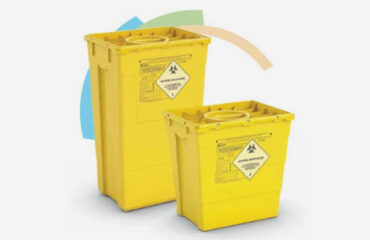Things about Reclaim Waste
Things about Reclaim Waste
Blog Article
The Greatest Guide To Reclaim Waste
Table of Contents4 Easy Facts About Reclaim Waste ShownLittle Known Questions About Reclaim Waste.The Facts About Reclaim Waste RevealedThe Best Guide To Reclaim WasteAll About Reclaim Waste
Check out the types, occurrences, and kinds of liquid waste. Domestic sewer waste refers to the waste and items from a domestic septic container. This kind of waste is produced by humans in houses, schools, and other structures. This only consists of sewage-disposal tanks that have a drainpipe area. The proper administration and disposal of residential sewer waste call for liquid waste to be moved to a sewage treatment plant where the appropriate techniques and equipment are related to detoxify and throw away waste.
Industrial waste frequently includes potential threats, such as combustible materials or a mix of liquid and strong waste items, and requires an advanced and in-depth disposal process. The disposal of business waste generally entails the filtration of waste before transport to guarantee secure and proper disposal. Hazardous waste is developed from results and runoff of commercial procedures and production.
This sort of waste can not utilize the exact same sewage administration transportation or processes as septic or commercial fluids. The industrial waste monitoring process calls for the evaluation and screening of fluid waste prior to it undertakes the disposal procedure (liquid waste removal). Overflow waste is the fluid waste that comes from overflow and excess stormwater in highly inhabited areas or cities
Drainage waste can create contamination and flooding if not taken care of appropriately. Learn extra concerning sewer cleaning and waste management. Guaranteeing proper waste management can stop calamities and lower ecological harm. Both individuals in property settings and professionals in industrial or production industries can gain from understanding the processes and guidelines of liquid waste management.
The Only Guide to Reclaim Waste
Get in touch with PROS Solutions today to discover our waste management and disposal services and the correct means to care for the fluid waste you generate.
(https://slides.com/reclaimwaste1)This so-called 'wastewater' is not only an essential resource but, after therapy, will certainly be launched to our land, rivers or the ocean. Used water from bathrooms, showers, bathrooms, cooking area sinks, laundries and industrial procedures is known as wastewater.

water made use of to cool down machinery or tidy plant and tools). Stormwater, a kind of wastewater, is runoff that flows from agricultural and metropolitan areas such as roof coverings, parks, gardens, roadways, courses and seamless gutters into stormwater drains pipes, after rain. Stormwater flows untreated straight to neighborhood creeks or rivers, eventually reaching the ocean.
The Only Guide for Reclaim Waste
In Queensland, a lot of wastewater is dealt with at sewage treatment plants. Wastewater is delivered from domestic or commercial websites via a system of drains and pump stations, understood as sewage reticulation, to a sewer treatment plant.
The Department of Natural Resources recommends local governments concerning managing, operating and keeping sewerage systems and treatment plants. In unsewered areas, neighborhood federal governments might call for householders to set up private or house sewer therapy systems to deal with residential wastewater from toilets, kitchen areas, restrooms and washings. The Department of Natural Resources authorizes making use of house systems when they are shown to be reliable.
In some new communities, therapy of some stormwater to eliminate trash, sand and gravel has actually started utilizing gross toxin traps. Wastewater therapy takes place in 4 phases: Removes solid matter.
Makes use of small living microorganisms recognizes as micro-organisms to break down and remove continuing to be dissolved wastes and fine particles. Micro-organisms and wastes are incorporated in the sludge.
Not known Details About Reclaim Waste
Nutrient removal is not readily available at all sewer therapy plants since it calls for pricey specialist tools. Clear fluid effluent generated after therapy might still have disease-causing micro-organisms - liquid waste disposal.

Many wastewater moves right into the sewerage system. Under the Act, local governments provide authorizations and licences for environmentally pertinent activities (Periods) involving wastewater launches that may have a local effect.
Indicators on Reclaim Waste You Need To Know
Surveillance gives accurate information about water high quality and can validate that licence conditions are being satisfied. The details gotten with tracking offers the basis for making water high quality decisions.
Report this page